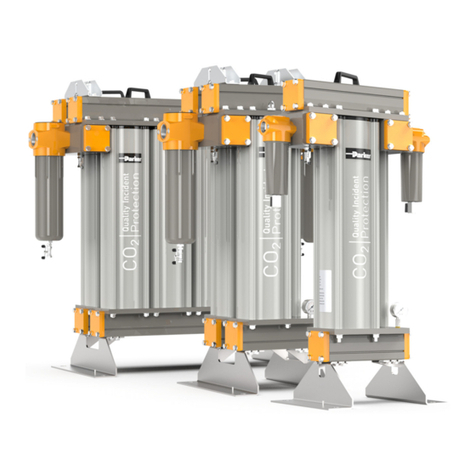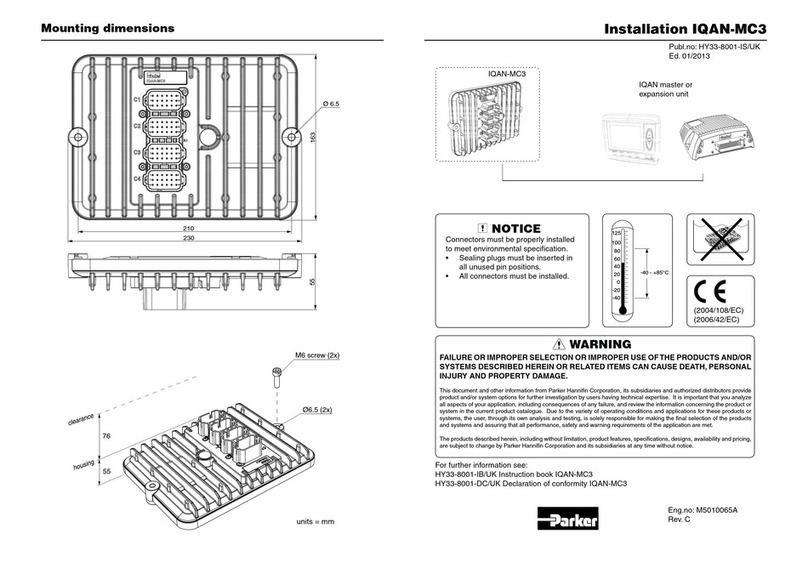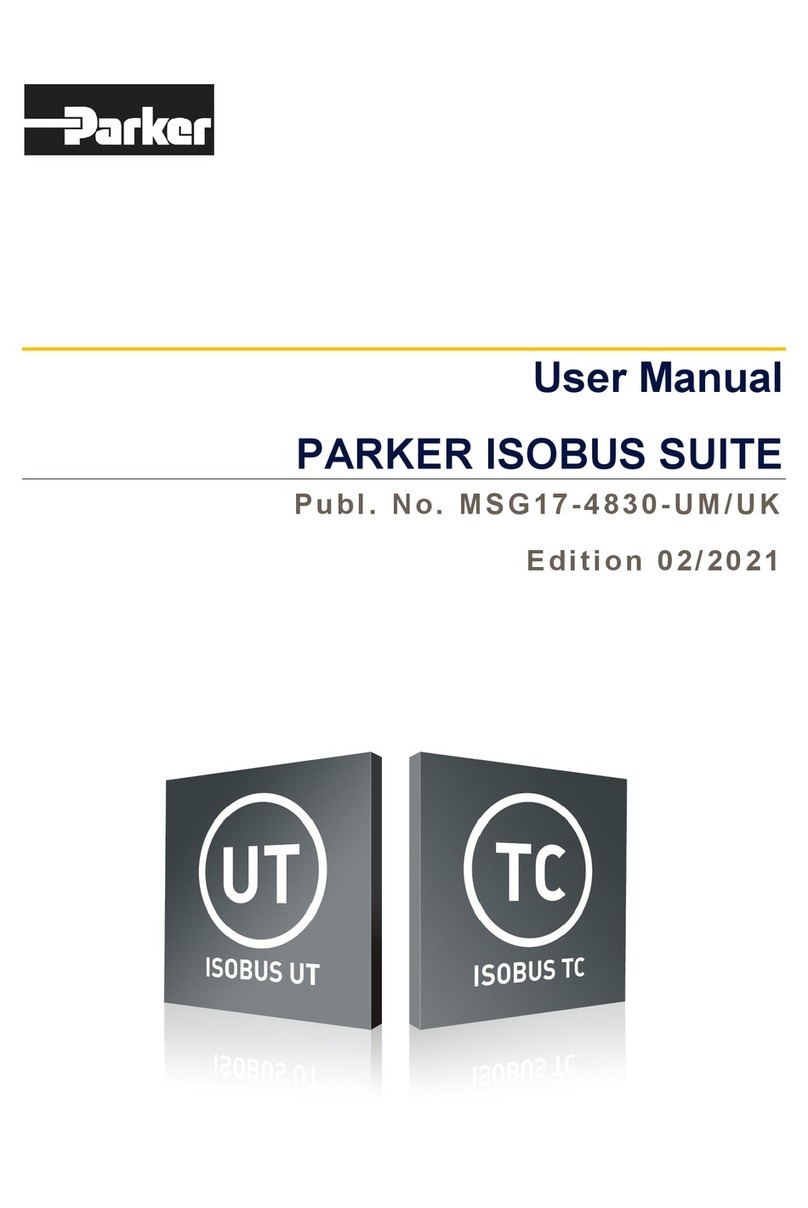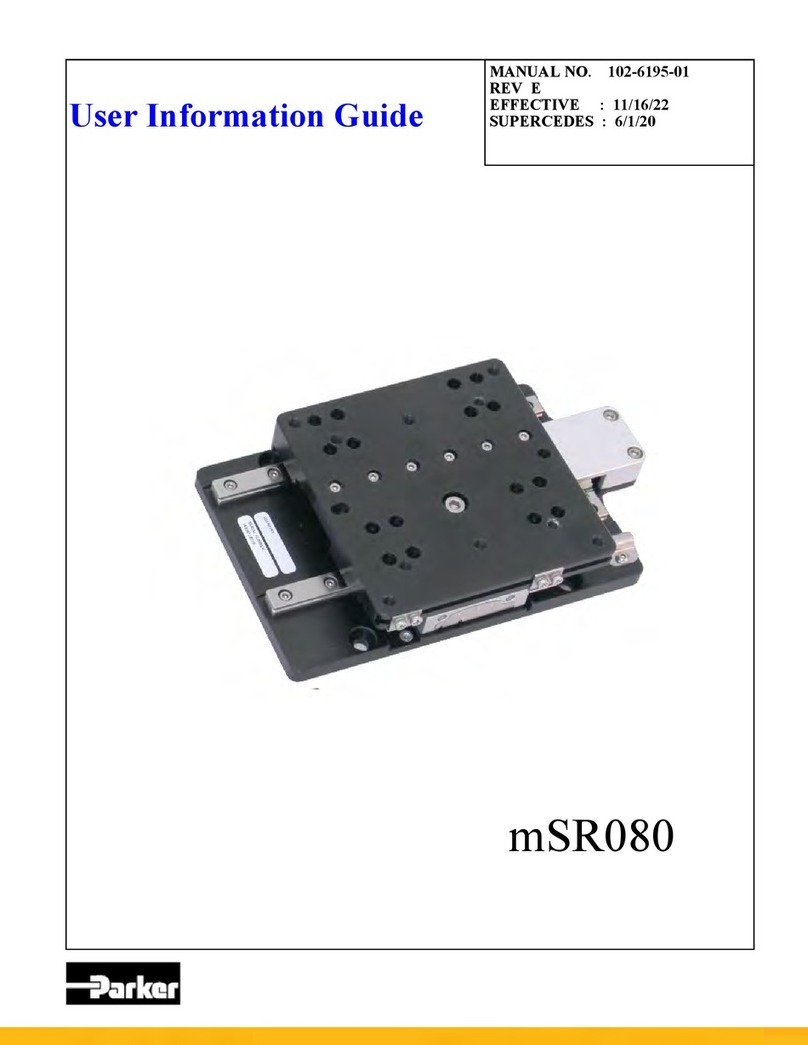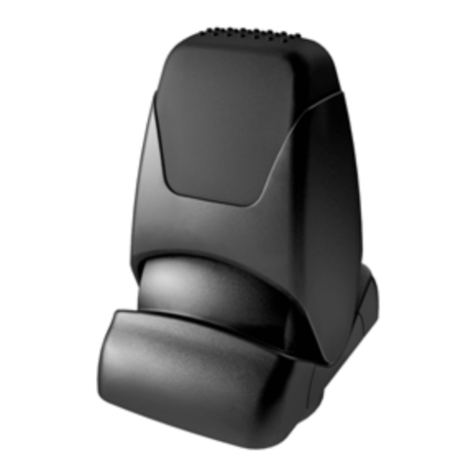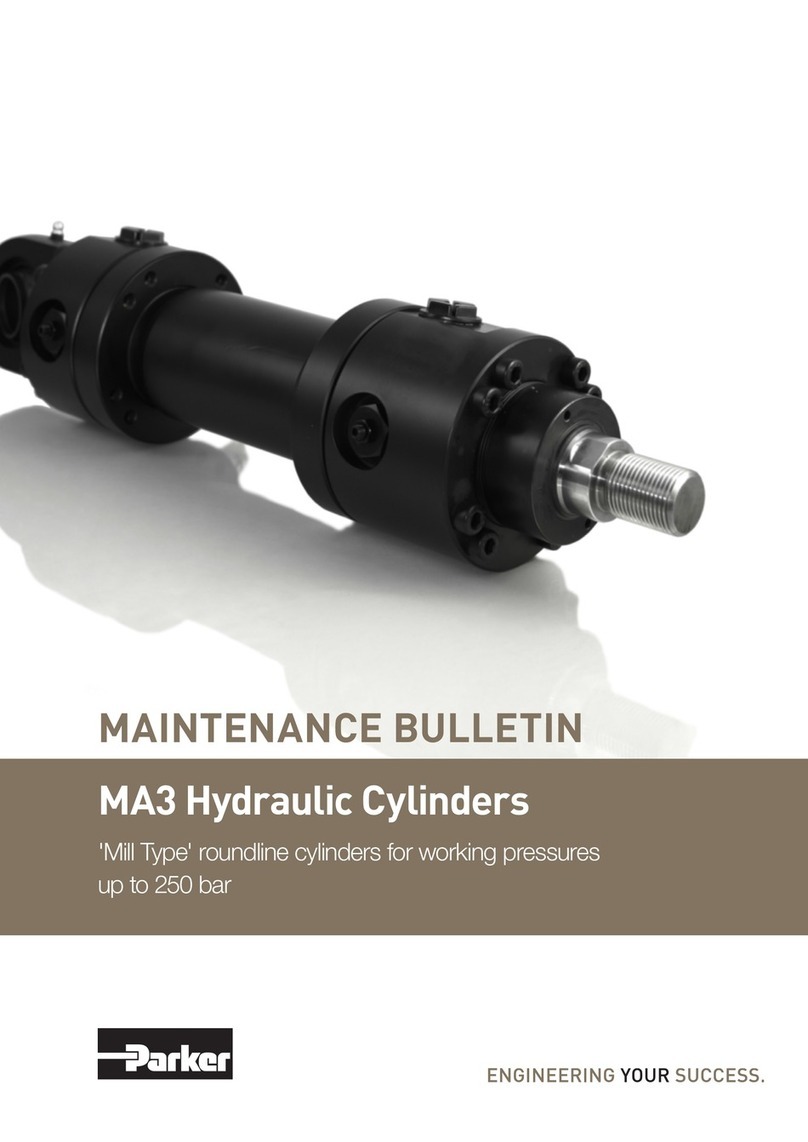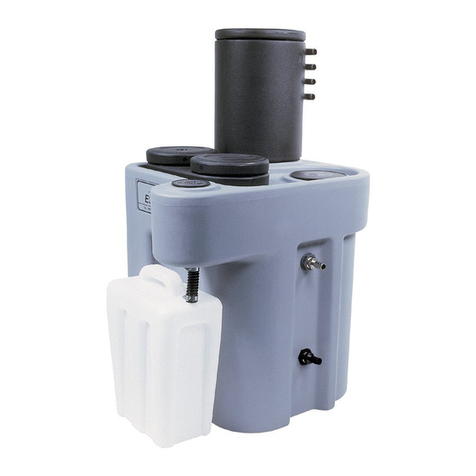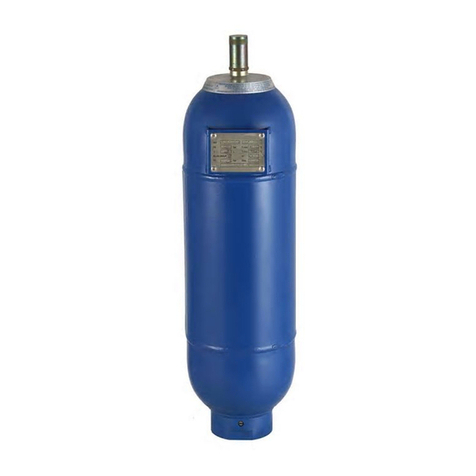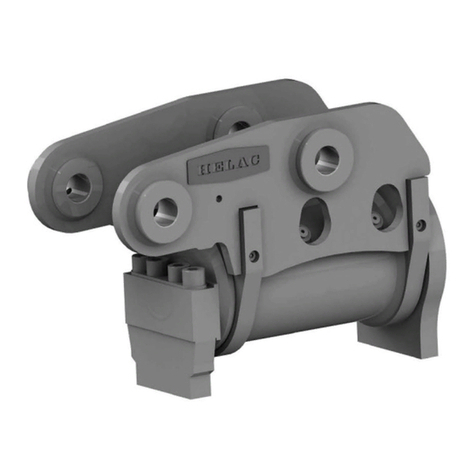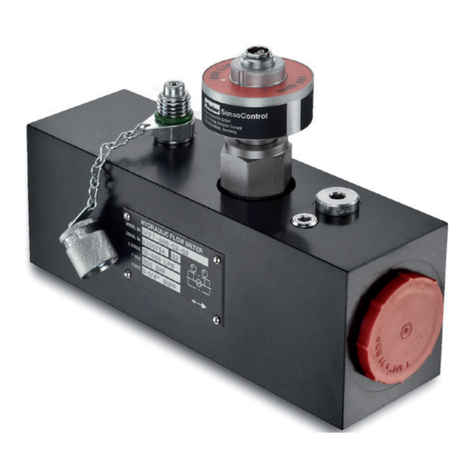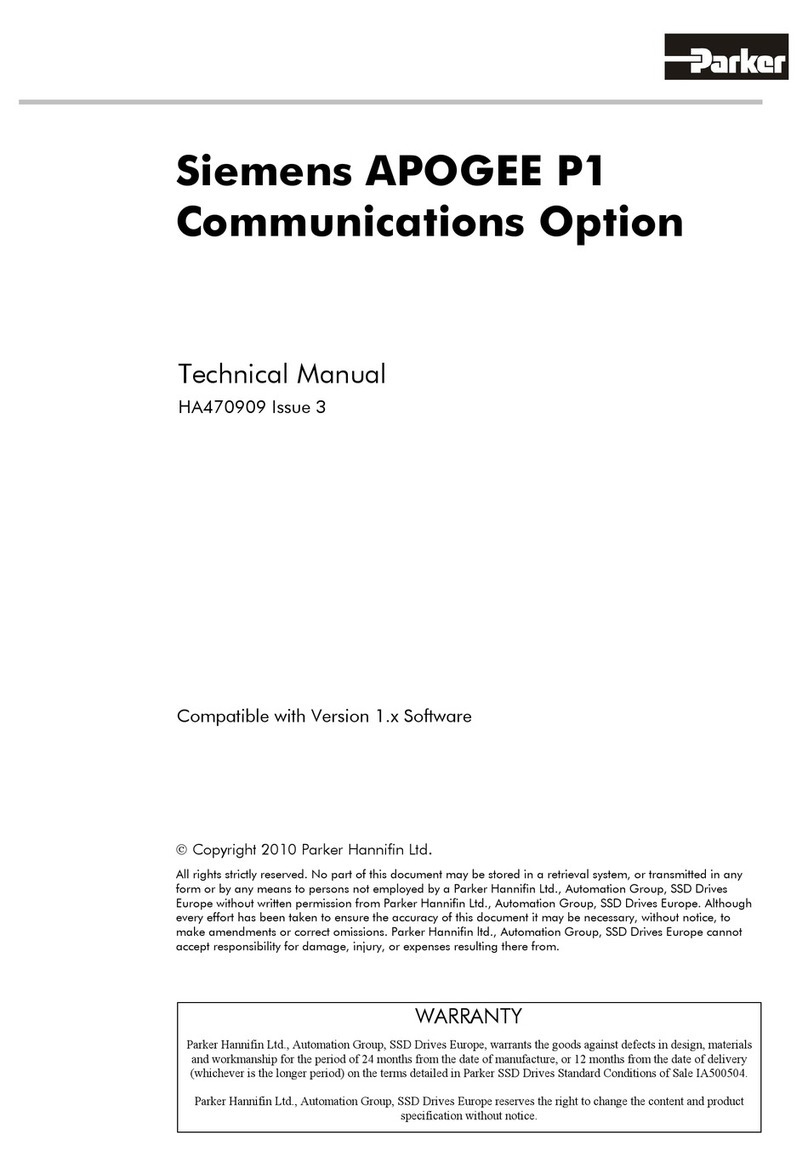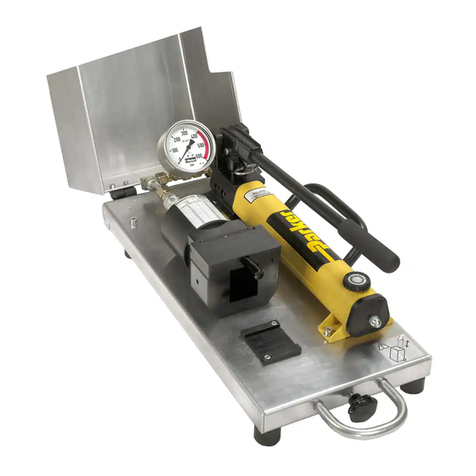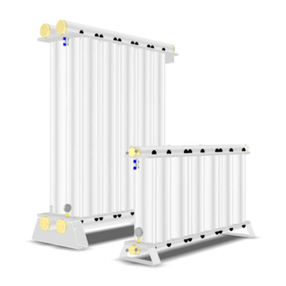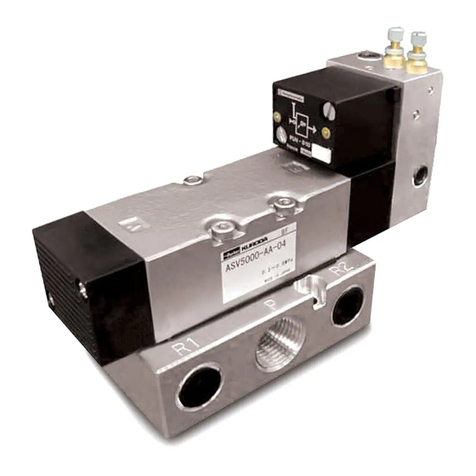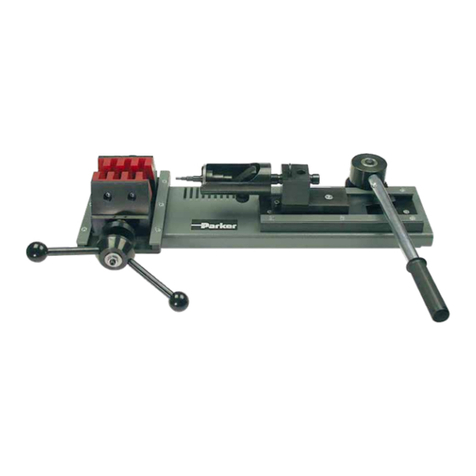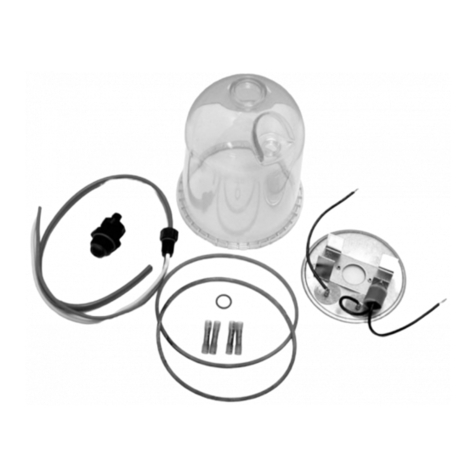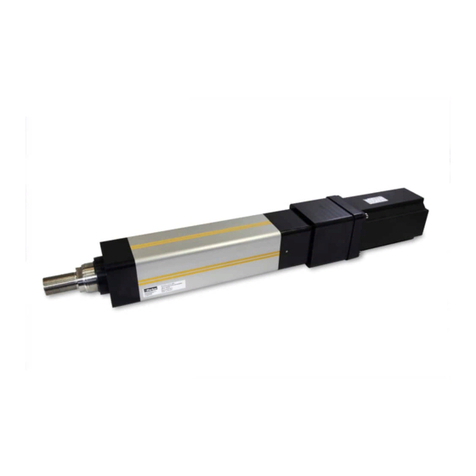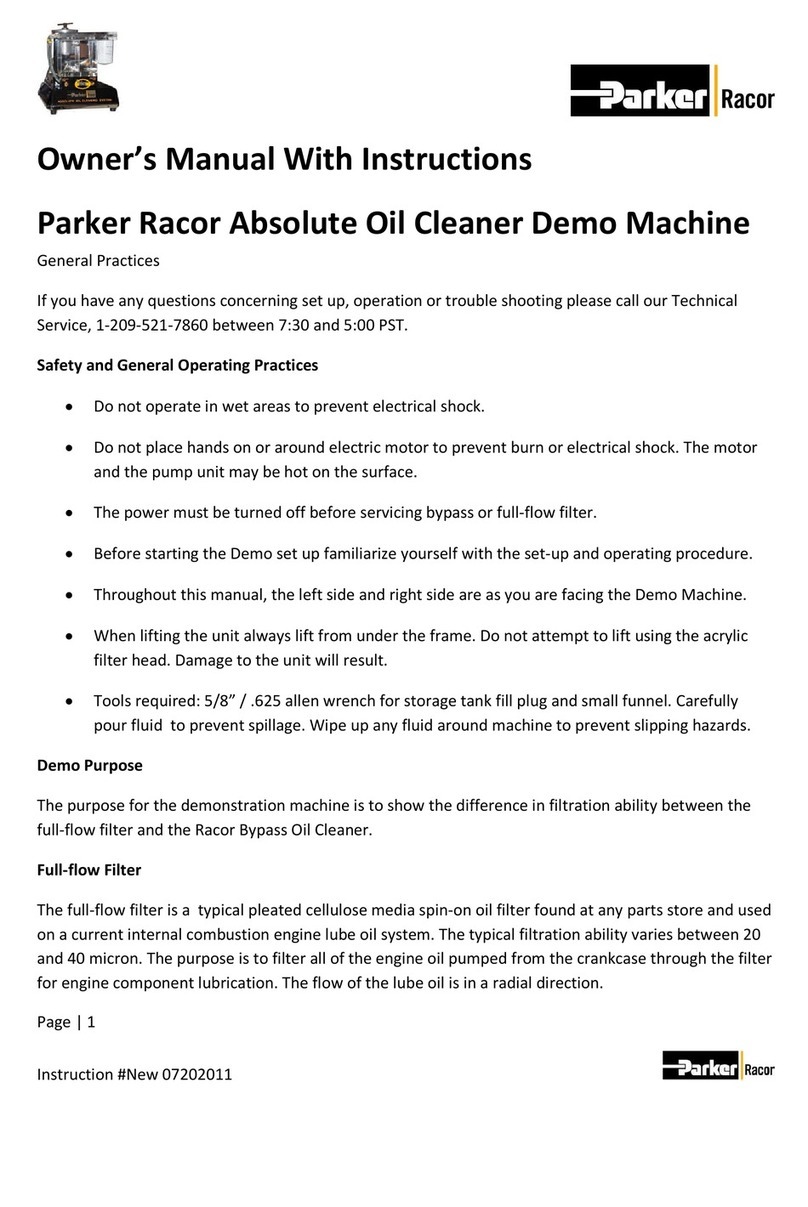
1 Allgemeine Informationen
Dieses Gerät wurde in Übereinstimmung mit den geltenden europäischen Verordnungen
und Richtlinien entwickelt, hergestellt und geprüft und entspricht den einschlägigen
Sicherheitsvorschriften der EN ISO 4413.
Die Anweisungen in diesem Handbuch und in den spezifischen Handbüchern, sofern
vorhanden und relevant, sind unbedingt zu befolgen. Der Lieferant übernimmt keine Haf-
tung für direkte oder indirekte Sach- oder Personenschäden, die sich aus der Nichtbeach-
tung der nachfolgenden Hinweise ergeben, sowie für die Folgen wie z.B. Betriebsausfälle
usw. Der Betreiber hat vor der Inbetriebnahme und während des Betriebes die am
Aufstellungsort geltenden Vorschriften für gasbeladene Speicher zu beachten und ist für
die Einhaltung dieser Vorschriften voll verantwortlich und hat die mit dem Gerät gelieferten
Unterlagen während der gesamten Lebensdauer sorgfältig aufzubewahren. Sie können bei
Inspektionen angefordert werden.
2 Handhabung und Lagerung
Die Originalverpackung ist für die Handhabung und Lagerung geeignet, sofern nicht
anders angegeben.
Das Gerät darf nicht einmal leichten Stößen ausgesetzt werden.
Lagern Sie es an einem kühlen, trockenen Ort. Nicht Flammen oder Hitze aussetzen.
Die Lagerzeit sollte 5 Jahre nicht überschreiten.
Alle Öffnungen müssen während der Lagerung verschlossen bleiben, um das Gerät vor
Verschmutzung und innerer Korrosion zu schützen.
3 Blockbeschriftung und Markierung
Die Angaben und Kennzeichnungen dürfen ohne die vorherige schriftliche Zustimmung
von Parker nicht verändert werden. Die folgenden Informationen sind auf dem Block
abgebildet:
• Parker-Logo.
• Firmenname und Herstellungsort.
• Produktbezeichnung.
• Herstellungsdatum (Woche/Jahr).
• Zulässiger Temperaturbereich TS in [°C].
• Maximal zulässiger Druck PS in [bar].
• Seriennummer.
• Hydraulisches Schema.
4 Inbetriebnahme
Vor der Installation und dem Betrieb der Sicherheits- und Isoliereinheit müssen die An-
weisungen und Sicherheitshinweise in dieser Anleitung sorgfältig gelesen werden.
Die Inbetriebnahme sollte nur von qualifizierten Technikern durchgeführt werden
(wenden Sie sich an Parker oder das autorisierte Netz). Führen Sie vor der Instal-
lation eine Sichtprüfung des Geräts auf Beschädigungen durch.
Vor Arbeiten an den Hydrauliksystemen ist sicherzustellen, dass kein Druck
vorhanden ist.
Eine unsachgemäße Installation kann zu schweren Unfällen, zum Austritt von
Druckflüssigkeit und/oder zum Bersten führen.
• Schweißen, Löten, Bohren oder andere Arbeiten am Block durchzuführen, die seine
mechanischen Eigenschaften verändern können, ist strengstens untersagt.
• Der Druckspeicher muss mit dem Anschluss A des Blocks und dem entsprechen-
den Anschlussstück verbunden werden.
• Die hydraulische Druckquelle muss an den Anschluss P des Blocks angeschlossen
werden.
• Die Verbindung zwischen dem Block und dem Tank wird über den Anschluss T
hergestellt.
• Überprüfen Sie, ob die Spannung des elektrischen Steuersignals mit der Spule des
Entlüftungsventils (optional) übereinstimmt.
4.1 Vorbereitung der Inbetriebnahme
Prüfen der Betriebsgrenzen:
Der Druck im Hydrauliksystem darf den PS-Wert des Blocks nicht überschreiten.
• Der Betriebstemperaturbereich des Systems und der Umgebung darf den TS des
Blocks nicht überschreiten.
• Der Einstelldruck des Druckbegrenzungsventils muss kleiner oder gleich dem PS
des Speichers sein.
• Der Block ist für die Verwendung von mineralölhaltigen Flüssigkeiten ausgelegt, für
die Verwendung anderer Flüssigkeiten wenden Sie sich bitte an PARKER.
• Der Block ist nicht für die Verwendung mit einer Flüssigkeit der Gruppe 1 gemäß
der Druckgeräterichtlinie PED 2014/68/EU ausgelegt.
• Es liegt in der Verantwortung des Planers des Kreislaufs, die notwendigen
Elemente vorzusehen, um einen Überdruck und ein Überlaufen des Behälters zu
vermeiden (Ventil in der Rücklaufleitung, ausreichende Entlüftung des Behälters
usw.), insbesondere im Falle eines versehentlichen Bruchs des Speicherseparators
(Blase, Membran, Kolben).
4.2 Prüfung der Unterlagen
Die folgenden Dokumente werden mit jedem Sicherheitsblock mitgeliefert:
• Betriebsanleitung
• Kalibrierungszertifikat für das Druckbegrenzungsventil
• Betriebsanleitung für das Druckbegrenzungsventil
Alle anderen Zertifikate müssen vor der Bestellung gesondert angefordert werden.
4.3 Inbetriebnahme
Vor dem Anschluss der Sicherheits- und Isoliereinheit ist unbedingt zu prüfen, ob die
Anschlüsse für den Stromkreis und den Akkumulator geeignet sind.
•
Der Druckspeicher muss an den Anschluss A des Blocks mit dem entsprechenden
Anschlussstück angeschlossen werden.
•
Die hydraulische Druckquelle muss an den Anschluss P des Blocks angeschlos-
sen werden.
•
Die Verbindung zwischen dem Block und dem Tank wird über den Anschluss T
hergestellt.
•
Überprüfen Sie, ob die Spannung des elektrischen Steuersignals mit der Spule des
Entlüftungsventils (optional) übereinstimmt.
4.4 Verriegelungsoption für das Absperrventil
Der Benutzer kann leicht zwischen dem Verriegelungssystem mit zwei Positionen (Ventil
offen oder geschlossen) oder mit einer Position (Ventil geschlossen) wählen.
• Schrauben Sie die Schraube/Scheibe des Absperrgriffs ab (1+2).
• Entfernen Sie den Absperrgriff (3).
• Positionieren Sie die obere Verriegelungsplatte (4) in der gewünschten Position
(siehe Markierung auf der Platte):
• Keine sichtbare Markierung: Verriegelung nur in geschlossener Ventilstellung
möglich
• Sichtbare Markierung “S”: Verriegelung in beiden Positionen möglich
• Bauen Sie die Teile in umgekehrter Richtung wieder zusammen und vergewissern
Sie sich, dass die Schraube/Scheibe, die den Absperrgriff hält, fest angezogen ist.
Dieser Vorgang kann nach dem Einbau des Blocks in den Kreislauf durchgeführt werden,
vorzugsweise, wenn kein Druck im Kreislauf vorhanden ist.
5 Wartung
Die Wartung darf nur von qualifizierten Technikern durchgeführt werden, wobei die Explo-
sionsgefahr zu berücksichtigen ist. Die Häufigkeit der vorbeugenden Wartung für einen
sicheren Betrieb hängt von der Installation und den Betriebsbedingungen ab (wenden Sie
sich an Parker oder einen zugelassenen Parker-Vertreter).
Es wird empfohlen, in regelmäßigen Abständen folgende Dinge zu kontrollieren:
• Den allgemeine Zustand des Sicherheitsblocks
• Sauberkeit
• Eventuelle Undichtigkeiten an den Anschlüssen oder anderen Komponenten
Bitte beachten Sie auch zusätzliche regionale Bestimmungen.
5.1 Sonstiges
Wir empfehlen Ihnen, die folgenden Kontrollen regelmäßig durchzuführen:
• Kontrolle der Sicherheitseinrichtungen und Anschlüsse
• Prüfen Sie die Befestigungen des Sicherheitsblocks
• Sichtprüfung des Sicherheitsblocks auf Verschleißerscheinungen wie Verformung
oder Korrosion
• Wenn Sie eine abrasive oder korrosive Flüssigkeit verwenden, überprüfen Sie das
Innere des Sicherheitsblocks.
• Prüfen Sie die Erdung (Durchgängigkeit)
• Sichtprüfung der Gummidichtungsteile
Die Häufigkeit der vorbeugenden Wartung für einen sicheren Betrieb hängt von der Instal-
lation und den Betriebsbedingungen ab.
Wenden Sie sich an Parker oder einen zugelassenen Parker-Vertreter.
Für die Wartung eines Sicherheitsblocks während des Betriebs (regelmäßige Requalifizier-
ungsmaßnahmen usw.) sind die geltenden Vorschriften des Standorts zu beachten.
Wenden Sie sich an Parker oder einen zugelassenen Parker-Vertreter, wenn Sie einen
Sicherheitsblock demontieren, reinigen oder wieder zusammenbauen möchten.
Verwenden Sie nur Original-Ersatzteile.
5.2 Verordnungen und Richtlinien
Druckgeräterichtlinie PED 2014/68/EU
Die SB-Blöcke erfüllen die grundlegenden Sicherheitsanforderungen in Bezug auf die
Gefahr von Überdruck in gasbeladenen Akkumulatoren.
REACH-Verordnung 1907/2006 EU
Wichtig: Diese Informationen können sich im Rahmen der halbjährlichen Veröffentlichung
der Liste der besonders besorgniserregenden Stoffe, die für eine Zulassung in Frage kom-
men, auf der Website der ECHA (Europäische Chemikalienagentur) ändern.
Alle Artikel des SB-Sortiments entsprechen den REACH-Vorschriften. Diese Erzeugnisse
enthalten keine besonders besorgniserregenden Stoffe (SVHC) in einer Konzentration von
mehr als 0,1 Gewichtsprozent.
ROHS-Richtlinie 2011/65/EU
Die optionalen elektrischen Komponenten der SB-Reihe (elektrische Spulen) entsprechen
der ROHS-Richtlinie.
ATEX-Richtlinie2014/34/UE
Manuell betriebene SB-Blöcke fallen nicht in den Anwendungsbereich der ATEX-Richtlinie
2014/34/EU, da sie keine eigenen Zündquellen haben.
Das Produkt wird als “einfaches” mechanisches Produkt gemäß der Definition in Absatz
§38 der ATEX-Richtlinie 2014/34/EU betrachtet.
WICHTIG
Elektrisch betriebene Versionen dürfen niemals in einer explosionsfähigen Atmo-
sphäre verwendet werden.
In potenziell entflammbaren Atmosphären muss der Benutzer unbedingt die
Gefahr einer elektrostatischen Zündung berücksichtigen.
6 Recycling
Bevor Sie einen Sicherheitsblock zerstören oder recyceln, entlasten Sie ihn von jeglichem
Restdruck. Dekontaminieren Sie ihn, falls erforderlich, und trennen Sie die Metallteile von
den elektrischen Teilen, falls diese vorhanden sind (elektrische Spulen).
Für jede Art von Bauteil (mechanisch oder elektrisch) sind die für das jeweilige Land
geltenden Vorschriften zu beachten.
7Parker Hannifin
Cylinder and Accumulator Division Europe
user manual / manuel d’utilisation / Benutzerhandbuch
SB Safety Block / Bloc Série SB / Sicherheitsblock SB Serie
